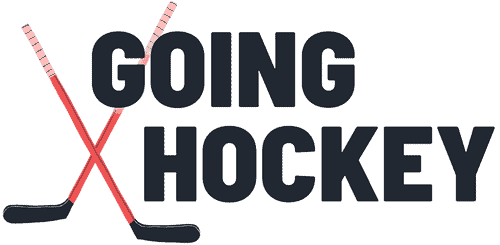In the action-packed world of ice hockey, where players showcase their skills and bask in the glory of goals, a unique and intriguing term has taken root in the sport’s vibrant lexicon: “grocery stick.”
What does grocery stick mean in hockey?
In hockey, “grocery stick” refers to a player who spends most of the game on the bench, resembling the idle, divider stick used at grocery checkouts.
What Does Grocery Stick Mean?
In hockey, the term “grocery stick” is a derogatory slang used to describe a player who spends most of their time sitting on the bench during games, resembling a divider stick used at grocery checkouts.

A “grocery stick” player is often considered a benchwarmer or someone who rarely gets ice time during games. The term implies that the player’s role is minimal, metaphorical to the divider stick at grocery checkouts and that they are not contributing significantly to the team’s performance or success.
While the term itself may be used lightheartedly by some players or fans, it can also carry a negative connotation and may be perceived as disrespectful or demeaning. Being called a “grocery stick” can be demoralizing for a player who aspires to be more involved in the game and contribute to their team’s victories.
It’s essential to remember that hockey is a team sport, and every player’s role, regardless of ice time, is vital in supporting the team’s overall performance and chemistry. Being supportive and encouraging of all teammates is crucial for maintaining a positive team atmosphere.

What Does Riding Pine Mean In Hockey?
In hockey, “riding pine” is a slang term used to describe a player who spends the entire game sitting on the bench as a substitute and doesn’t see any playing time on the ice.
When a player is “riding pine,” it means they are not actively participating in the game and are essentially relegated to the role of a benchwarmer for that particular match.
The term “riding pine” comes from the image of a player sitting on the wooden bench, often made of pine, located along the boards of the hockey rink. Players who are not in the active lineup for a game may sit on the bench throughout the entire game, hence the term “riding pine.”
Situations where a player is “riding pine” can vary. It may be due to various reasons, such as the player being benched or being used sparingly by the coach. Coaches make lineup decisions based on various factors, including the player’s performance, match-ups, game strategies, and team dynamics.

While “riding pine” might be frustrating for players who want to be on the ice contributing to the team’s success, it’s essential to remember that hockey is a team sport, and every player has a role to play, even if they are not on the ice during a specific game. Being supportive of teammates, staying ready for potential opportunities, and maintaining a positive attitude are crucial aspects for players who find themselves “riding pine” in a particular game.
What Is The 4th Line In Hockey?
In hockey, the “4th line” refers to the fourth forward line on a team’s roster.
In a typical hockey game, teams have four forward lines and three defensive pairs, each consisting of two defensemen. The lines are organized based on player positions and roles, and they are rotated throughout the game to ensure players get rest and maintain energy levels.
The 4th line is often understood as the “energy line” or the “checking line.” This line typically comprises players who excel at defensive responsibilities, physical play, and providing energy and intensity on the ice. While they may not be the primary goal scorers or offensive stars of the team, they play a crucial role in various aspects of the game.
The main responsibilities of the 4th line include:
- Physicality: Players on the 4th line are often known for their physical play, delivering hits, and wearing down the opposition over the course of the game.
- Energy and Momentum: The 4th line’s primary goal is to bring energy and intensity to the team. A strong shift from the energy line can swing momentum in favor of their team or provide a boost during critical moments in the game.
- Defensive Play: The 4th line is often deployed to match up against the opposing team’s top players, particularly when they are on home ice and have the advantage of the last change. The line’s defensive focus is essential for limiting the opponent’s scoring chances.
- Short Shifts: The 4th line typically has shorter shifts compared to the other lines. Their main objective is to create a spark and maintain momentum rather than playing extended minutes.
While the 4th line’s primary focus is on defensive play and providing energy, some players on this line can also contribute offensively with timely goals or assists. The role of the 4th line can vary depending on the team’s overall strategy and the specific players on the roster. Overall, the 4th line is an essential component of a well-rounded hockey team, providing depth, balance, and contributions in various aspects of the game.


Leave a Reply